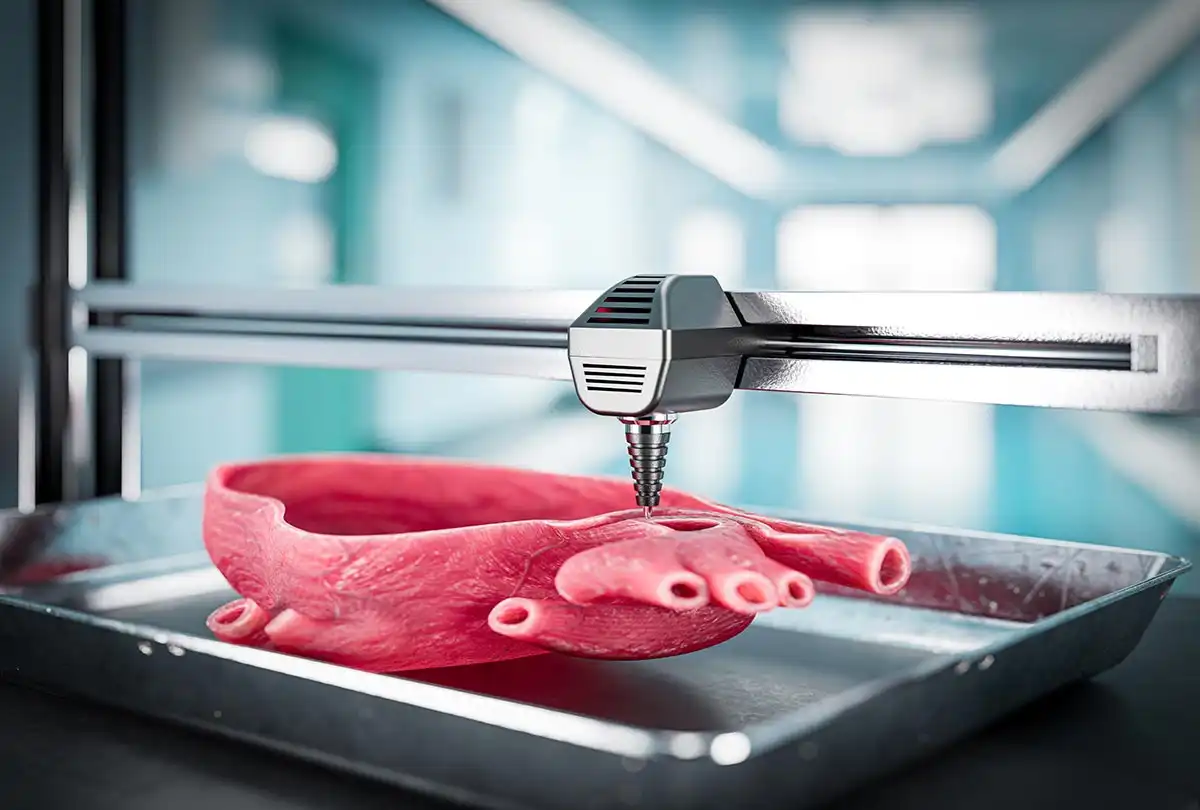Bioprinting represents a revolutionary technology at the forefront of biology, engineering, and medicine, promising to transform healthcare through the precise fabrication of living tissues and organs. This innovative approach enables the deposition of bioinks containing living cells and biomaterials in a layer-by-layer fashion, closely replicating the complex structures and functionalities of native tissues. As the field of bioprinting progresses, it holds the potential to address crucial challenges in tissue engineering, regenerative medicine, and personalized healthcare.
Bioprinting technologies encompass several main categories based on the type of bioinks and methods used for tissue deposition. These include inkjet bioprinting, extrusion-based bioprinting, and laser-assisted bioprinting, each offering unique advantages and challenges.
Inkjet bioprinting employs thermal or piezoelectric forces to deposit small droplets of bioink onto a substrate. It excels in high-resolution printing and is suitable for delicate cell types, although it may damage cells due to high shear stress.
Extrusion-based bioprinting is widely used, relying on pneumatic or mechanical forces to extrude bioinks through a nozzle. This method allows for the use of a variety of bioinks, including hydrogels and cell aggregates, and enables the deposition of complex, multi-material constructs. However, achieving high-resolution printing and maintaining cell viability can be challenging.
Laser-assisted bioprinting uses lasers to precisely pattern bioinks onto a substrate. It offers excellent precision and control over cell deposition and is particularly suitable for printing delicate cell types. However, it requires specialized equipment and is generally more expensive.
The bioinks used in bioprinting are crucial to its success. These bioinks are typically composed of cells, biomaterials (such as hydrogels), and growth factors. They must be biocompatible, provide a supportive environment for cell growth and differentiation, and possess appropriate mechanical properties to mimic native tissues.
Applications of bioprinting are broad-ranging, from creating tissue models for drug testing and disease modeling to engineering implants and regenerating damaged tissues and organs. Bioprinted tissues have already been used in clinical trials, demonstrating the potential for personalized medicine and patient-specific treatments.
Challenges in bioprinting include scaling up production, ensuring long-term cell viability, integrating vascular networks, and navigating regulatory hurdles. Researchers are continuously developing new bioinks, refining printing techniques, and advancing imaging and modeling tools to address these challenges and enhance the capabilities of bioprinting.
In conclusion, bioprinting represents a transformative technology with the potential to revolutionize healthcare by enabling the precise fabrication of tissues and organs. As the field continues to advance, it holds promise for addressing critical healthcare needs and offering new solutions for regenerative medicine and personalized treatments.
